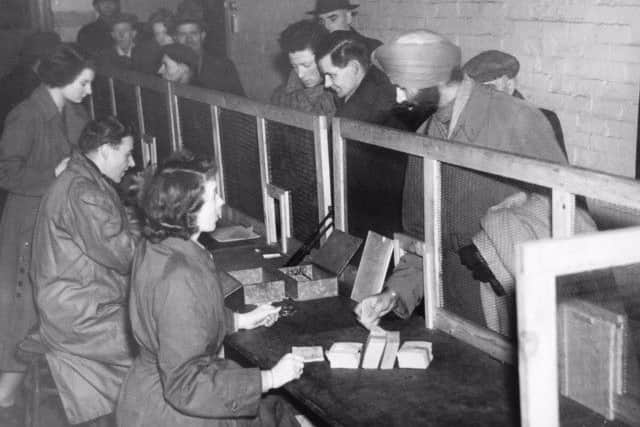The days when you watched the match, got the bus and still had change from two shilling


Whether it was getting a double decker bus to the match on a two pence return ticket, or Sunderland and Newcastle fans standing side by side for derbies, you had lots to tell us.
Chris Cordner takes up the memories.


Malcolm Bramley started as an office junior at the club in 1962 and was later assistant secretary until, in 1968.
Advertisement
Hide AdAdvertisement
Hide AdHe said: “I joined Derby County as secretary when Brian Clough was manager. I then worked with Len Ashurst as secretary at Gillingham.”
He submitted a picture of the staff taken at the end of the 1964 promotion season, including himself
And he told us: “This was the entire full time backroom staff at the time, when we were dealing with crowds of over 50,000.”


The names of those pictured included, from left to right, Alan Brown (Manager), George Crowe (Secretary), Eddie Marshall (Assistant Secretary), Jack Jones (Trainer), Arthur Wright (Trainer), Bill Scott (Youth Team Trainer), Johnny Waters (Physio), Charlie Ferguson (Chief Scout), and Jack Dryden (Groundsman).
Advertisement
Hide AdAdvertisement
Hide AdPeter Turnbull, now of Spalding, has supported the Black Cats for more than 60 years. He told us he used to live in the Barnes area of Sunderland.
“From there I could get to a match at Roker for less than two shillings all in.”
That’s ten pence in today’s money. Peter added: “ Boys were charged one shilling and adults two shillings at the Roker and Fulwell ends. Bus fare - via green double-decker buses, run by Sunderland Corporation - to the ground was two pence each way and the match programme was four pence.”
Up until 1957, said Peter, the programme contained a proud boast on its cover. It said: “Only Club which has never played in any other than the First Division”.
Advertisement
Hide AdAdvertisement
Hide AdAnd he explained how match day was a very reasonably priced affair. “There being 12d in one shilling, I started with 24d and still had 4d (1⅔p) left.
“I didn’t need a pie or cup of Bovril as my grandparents lived in Hartington Street and I went there after the match, along with my father and uncles, who warmed their backs against the coal fire.
“We listened to the results on Grandstand, although Grandma generally knew the Sunderland score before we got there, as she could hear the roars and groans of the crowd.
“In my early days I was still small enough to be passed over the heads of the crowd to sit at the front at big matches. There was no segregation of supporters. At the derby matches Sunderland and Newcastle supporters stood side by side (home and away). There was plenty of “banter” but no trouble.”
Advertisement
Hide AdAdvertisement
Hide AdAlan Mitcheson, has followed the lads since 1944 when he saw his first match. Later, from 1953, he worked at Thomas Summerbell printers, which “had a contract to print the large posters, advertising Sunderland home games. Ten years later, I moved to the Northumbrian Printing Works. Here we printed the Sunderland programmes and season tickets.
“I have vivid memories of matches at Roker Park. My first game was to see Sunderland play Bradford City in 1944, and shortly after remember seeing six of the 1937 cup final team, namely, Johnny Mapson, Jimmy Gorman, Bert Johnstone, Len Duns and Eddie Burbanks and Raich Carter, who turned out when on leave from the RAF.
“Many times I saw kids being passed over the heads of older supporters in the Fulwell End. Charley Hurley was a magnificent player.”
Thank you to everyone who responded to our story and keep those memories coming.
Email [email protected]